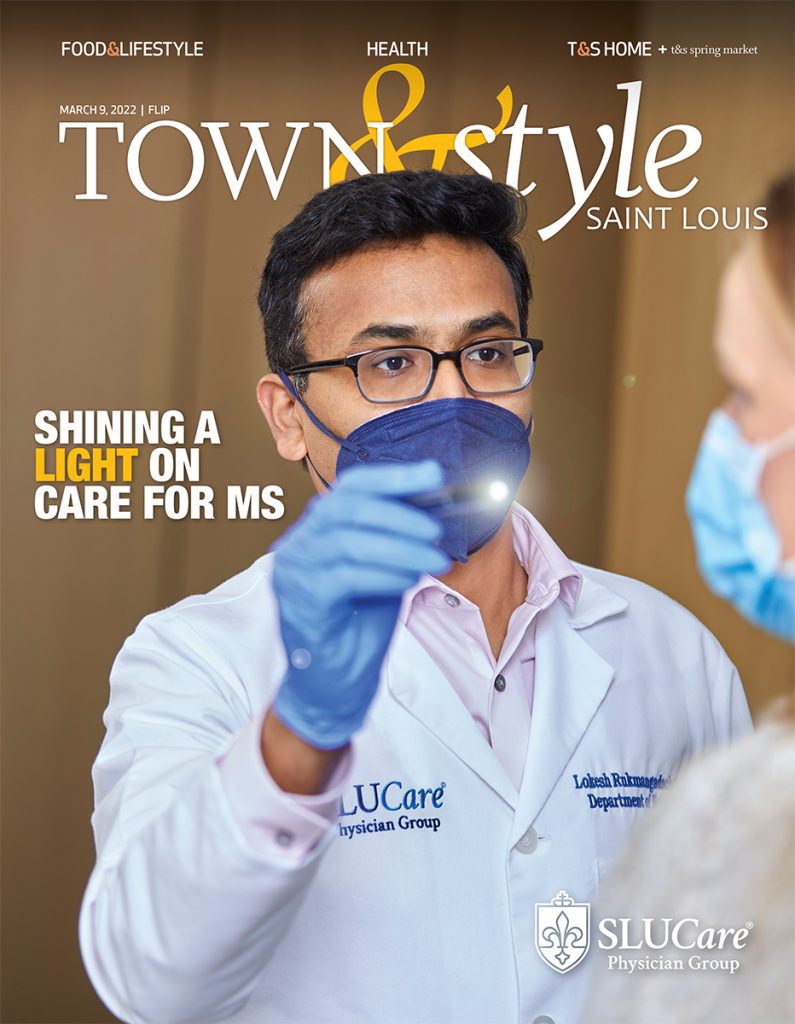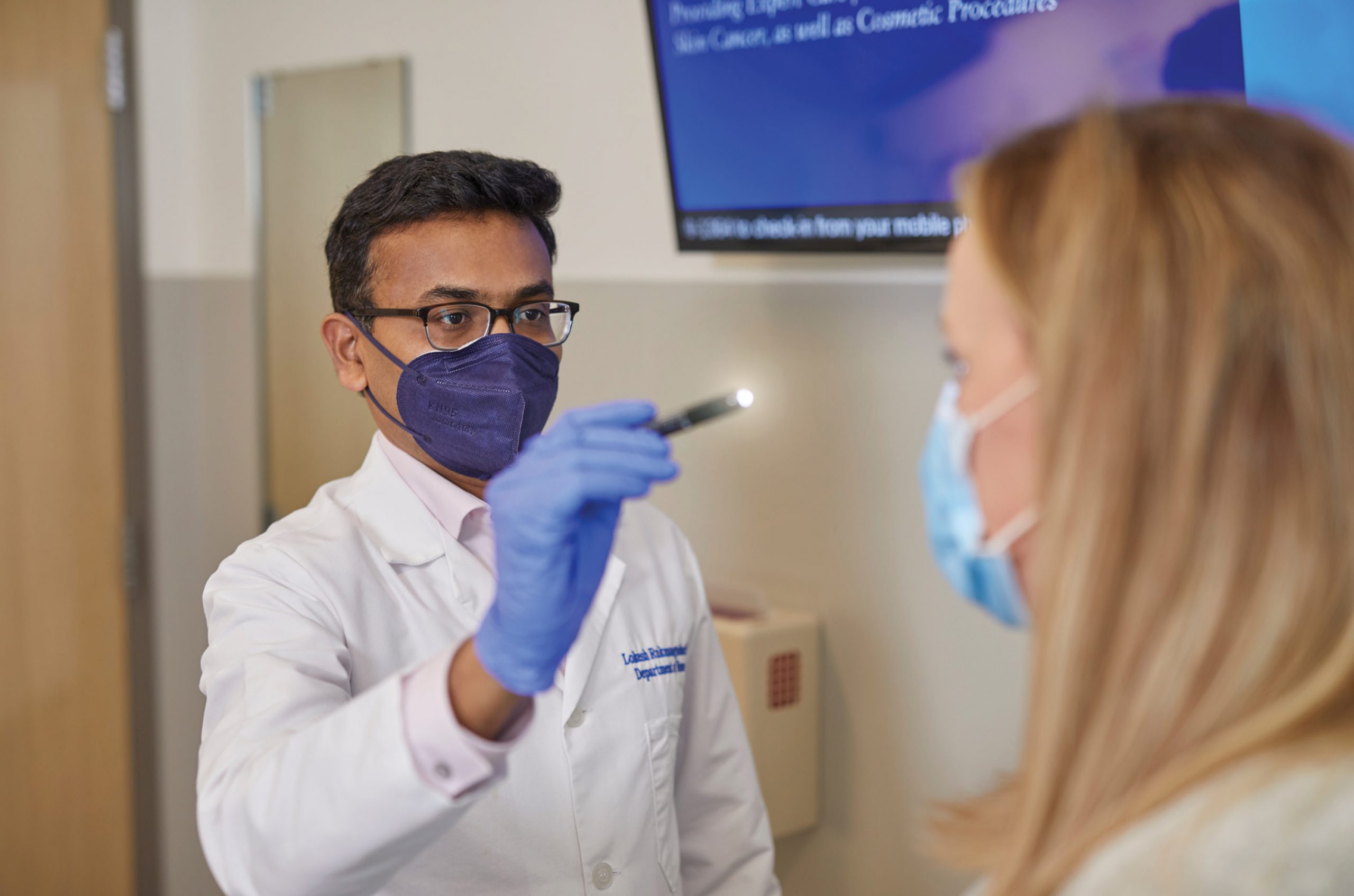Multiple sclerosis is a complex condition involving both the body’s neurological processes and its ability to protect itself. The immune system attacks the myelin, a protective sheath that covers nerve fibers, disrupting communication between the brain and the body and causing symptoms that differ greatly for patients.
 “Symptoms depend on where in the nervous system lesions are occurring, and what stage the condition has reached,” says Dr. Lokesh Rukmangadachar, a SLUCare neurologist at the Center for Specialized Medicine at SSM Health Saint Louis University Hospital. “In some patients, physical effects accumulate, but in others there may not be any. It’s a bit like a traffic jam: If there’s a blockage in an alley, it’s not going to be as obvious a problem as if there’s a blockage on a main highway. In multiple sclerosis, if the optic nerve is affected, there may be a loss of vision. If lesions occur in the nerve pathways to the arms or legs, there can be weakness or paralysis. If it affects the sensory pathways, there can be pain and loss of balance, and if it affects the brain stem, the person may experience double vision or coordination problems.” Patients tend to have different combinations of symptoms, which also can include numbness, tingling and bladder dysfunction.
“Symptoms depend on where in the nervous system lesions are occurring, and what stage the condition has reached,” says Dr. Lokesh Rukmangadachar, a SLUCare neurologist at the Center for Specialized Medicine at SSM Health Saint Louis University Hospital. “In some patients, physical effects accumulate, but in others there may not be any. It’s a bit like a traffic jam: If there’s a blockage in an alley, it’s not going to be as obvious a problem as if there’s a blockage on a main highway. In multiple sclerosis, if the optic nerve is affected, there may be a loss of vision. If lesions occur in the nerve pathways to the arms or legs, there can be weakness or paralysis. If it affects the sensory pathways, there can be pain and loss of balance, and if it affects the brain stem, the person may experience double vision or coordination problems.” Patients tend to have different combinations of symptoms, which also can include numbness, tingling and bladder dysfunction.
The effects of multiple sclerosis also vary in terms of when symptoms appear. “Typically, we call MS attacks ‘flares,’ and for about 85% of patients, these episodes lapse and recur,” Rukmangadachar says. “Patients experience a flare, then they may get better on their own or with treatment. There may be no symptoms for a while, then they’ll have another attack.” And the other 15% of patients tend to have symptoms that appear and steadily worsen over time, he says.
The condition is much more common in women, and signs usually develop in young adulthood, although it can appear at other stages of life. “Most MS diagnoses happen between 20 and 40 years of age, but it can occur in children as young as 10 or 11,” Rukmangadachar says. “It’s very uncommon for it to be diagnosed past the age of 60.” There are more than 200 genes associated with the condition, and environmental factors likely play a role as well. Treatment normally is in the form of medication, and a healthy diet and exercise are encouraged for those who have been diagnosed.
“As with other diseases, early detection of multiple sclerosis is important,” Rukmangadachar explains. “Any new neurological symptoms in a young adult should raise concern and spur the patient to consult a doctor. The total burden of accumulating lesions can influence how well the person does down the line, so early intervention is key. Diagnosis usually is made by a neurologist, who will do an exam, talk about clinical and family history, perform an MRI and possibly do a lumbar puncture to look for certain proteins in the spinal fluid. Proper treatment can lead to reduced disability, both in terms of when symptoms appear and how severe they are.” SLUCare neurologists often collaborate with other team members, including mental health professionals, urologists, ophthalmologists and physical therapists.
Rukmangadachar says MS patients have cause for optimism. “The outlook for people with this condition is much better than it was 10 or 20 years ago,” he says. “We have more treatment options, and new classes of medications and research are on the horizon. It’s a very complex illness, but we can manage it for better results.”
SLUCare Physician Group provides comprehensive diagnostic and treatment services for patients with neurological conditions such as multiple sclerosis. Pictured on the cover: SLUCare neurologist Dr. Lokesh Rukmangadachar. For more information, call 314.977.6082 or visit slucare.edu and search for ‘multiple sclerosis.’
Cover design by Julie Streiler
Cover photo courtesy of SLUCare Physician Group
Pictured at top: SLUCare neurologist Dr. Lokesh Rukmangadachar
Photo courtesy of SLUCare Physician Group








